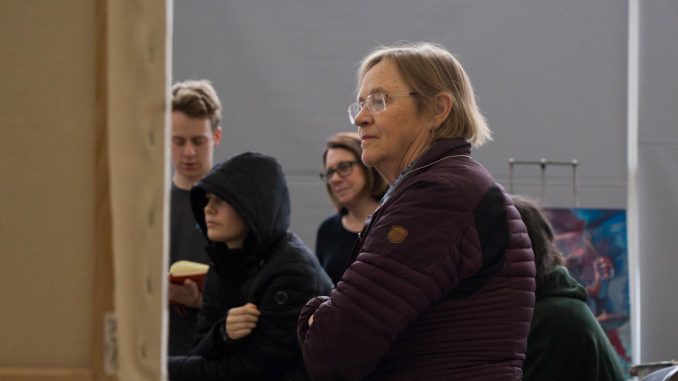
When she was young, Dona Nelson worked for an artist and became impressed by their personal collection of artwork. At 22, she began creating her own collection.
“I’m interested in art in general,” said Nelson, a painting professor. “And I find very wonderful, unique and moving on all levels.”
On Nov. 12 and 13, Nelson took her collecting experience to help Tyler School of Art and Architecture’s painting program pilot the first painting study center. The center displayed paintings, drawings, prints and books from six art collections gathered by faculty and artists in Tyler’s painting department, said Matthew Sepielli, the head of the painting program.
“The whole purpose of this was really for study and for those who are curious to learn more about these artists and see some paintings, drawings and works in person,” Sepielli added.
The painting department made the center out of the department’s conference room. Sepielli showcased his collection at the center, which included a piece by Nelson.
Faculty chose a range of art types, like oil painting, watercolor and collages, in order to represent a variety of paintings, Sepielli said.
“It really represents a kind of international range of different kinds of artists, and it was important for us to make sure students really got to see a lot of different ways of approaching making artwork,” he added.
The idea came about after Louise Fishman, a 1963 painting and printmaking alumna, lectured at Tyler and spoke to Nelson about the school’s art collections and the importance of studying and collecting works of art.
The study center is modeled after museums, like the Philadelphia Museum of Art and the Metropolitan Museum of Art, where students are encouraged to examine artwork and discuss the style and technique the artist used, Sepielli said.
At these study centers, people have a maximum of half an hour to an hour with the art, whereas students and faculty were able to view the works for longer periods of time at Tyler.
“The more people are able to access in terms of their resources and their own collections, the more that we’re able to show our students,” Sepielli said.
After the first day of the event, Sepielli decided to continue expanding the center to more departments at Tyler next semester and for more than two days, he said.
“[Sepielli] is really interested in people’s work and kind of gives you the tools to step up your practice,” said Jacob Stevens, a senior painting major, Sepielli’s former student.
Stevens attended the study center after looking forward to it for a few weeks, he said.
“It’s an interesting idea, for one to see not necessarily the work that the professor’s making but the work that they collect and they’re interested in,” he added.
Nelson believes the center helps artists recognize how a work was painted or how paint was mixed.
“It’s very important for young people to see they are makers also and to see the kind of specific decisions that art-making is all about,” she added.


Be the first to comment